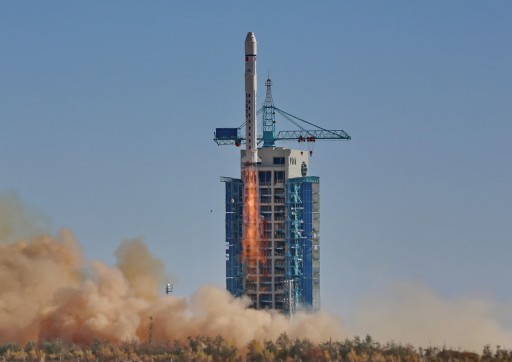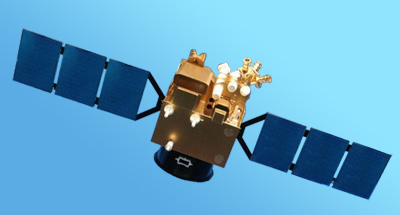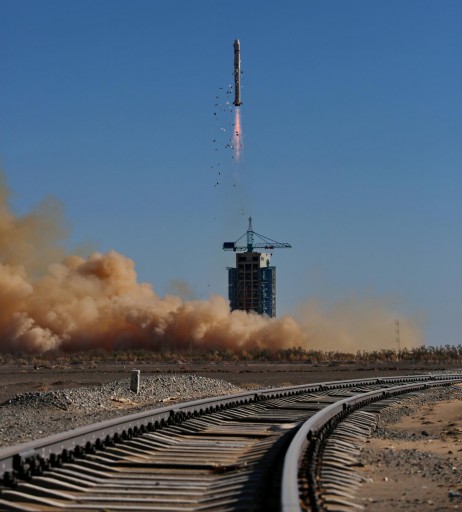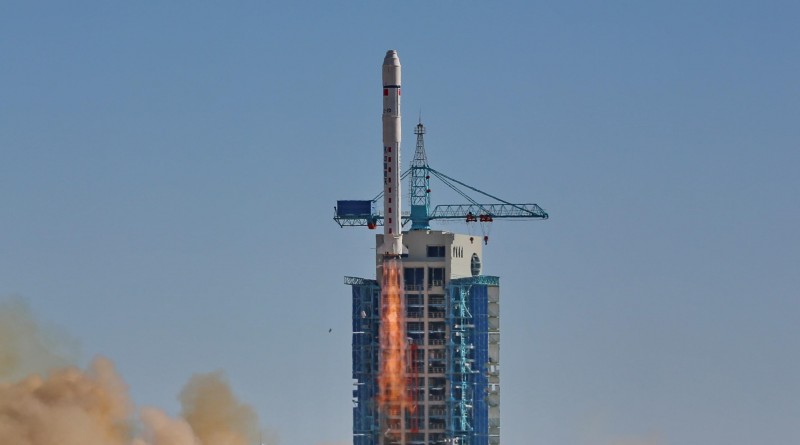China’s Long March 2D successfully launches Tianhui-1C Earth Observation Satellite

China successfully launched a Long March 2D rocket on Monday, lifting the Tianhui-1C satellite to a Sun Synchronous Orbit. Liftoff from the Jiuquan Satellite Launch Center took place at 7:10 UTC and tracking data later revealed the satellite in an orbit of nearly 500 Kilometers. The Tianhui series of satellites uses stereo-imaging systems for the collection of topographic data.
The first Tianhui-1 satellite was launched in August 2010 as a demonstration mission for the use of a stereo imager to gather topographic data from orbit. Tianhui-1B followed in May 2012 to provide a follow-on capability after the three-year service life of the first satellite.
The Tianhui-1 satellites are built by the Hangtian Dongfanghong Weixing Corporation and the Chinese Academy of Space Technology. They use two three-segment deployable solar arrays for power generation and have precise attitude control and pointing capability. The satellite payload is comprised of a three-dimensional imaging system for the acquisition of stereo imagery and a multi-band camera.

The stereo imager has a field of view of 25 degrees and achieves a ground resolution of five meters. It is sensitive across a wavelength range of 510 to 690 nanometers. The multi-band camera reaches a resolution of ten meters and covers four spectral channels in the blue, green, red and near infrared bands. Both imaging systems are covering a ground swath of 60 Kilometers.
The Tianhui satellite program has been merged with a portion of the Ziyuan Earth Observation program that includes civil and military remote sensing satellites. The Ziyuan-3 branch of the program is dedicated to stereo imaging and was likely combined with the Tianhui-1 satellite series, under operation by the People’s Liberation Army.
Monday’s launch utilized the Long March 2D version of China’s Chang Zheng launch vehicle series, occurring at 7:10:04 UTC. The two previous Tianhui satellites lifted off at precisely the same time. Heading to the south-west, Long March 2D was set for an ascent mission of around ten minutes. Confirmation of launch success was provided by Chinese space officials approximately half an hour after liftoff.
The Tianhui-1C satellite was detected in an orbit of 488 by 496 Kilometers at an inclination of 97.35° – matching the insertion orbits of the previous two satellites.

Long March 2D can launch Payloads of up to 3,500 Kilograms to Low Earth Orbit and has a SSO capability of up to 1,300kg. The CZ-2D Launcher was developed by the Shanghai Academy of Spaceflight Technology and is capable of delivering payloads into a variety of Orbits, including Low Earth Orbit and Sun Synchronous Orbit. Long March 2D features two stages, the first is identical to the Long March 4 Vehicle while the second stage is based on CZ-4, but has a modified equipment bay.
The Launcher stands 41.06 meters tall, has a diameter of 3.35 meters and a liftoff mass of 232,255 Kilograms. For the first 170 seconds of Flight, the vehicle is powered by its first stage that is equipped with a YF-21C Engine that provides a thrust of 2,962 Kilonewtons. The stage is 27.91 meters long, 3.35 meters in diameter and filled with 183,200 Kilograms of Unsymmetrical Dimethylhydrazine and Nitrogen Tetroxide Propellants for a total weight of the first stage at launch of 192,700kg.
After first stage burnout and jettison, the second stage starts controlling the flight. The upper Stage is 10.9 meters in length and has the standard CZ-2D diameter weighing 45,600kg at liftoff. It also uses UDMH and NTO as propellants. A total of 39,550 Kilograms are aboard its tanks at blastoff. The second stage is powered by a YF-24C main engine providing 742 Kilonewtons of thrust and a 47.1-Kilonewton Vernier Thruster. Long March 2D can be outfitted with two different payload fairings to accommodate payloads of different sizes. The fairings have diameters of 2.90 and 3.35 meters. The large fairing is 6.98 meters in length.
The Jiuquan Satellite Launch Center which is also known as Shuang Cheng Tze launch center was China’s first launch facility being established in 1958. It is located in the Gobi Desert about 1,600 Kilometers from Beijing.

